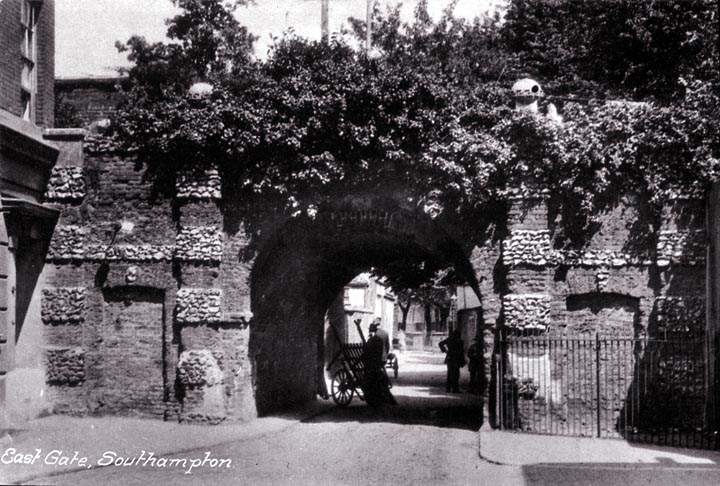
The name of this gate suggests that it was, at one time, an entrance to the city. It was probably a defensive work. Its appearance suggests that it has been modified since its original construction. (This is) almost certainly York Gate, notwithstanding what is printed on the card.) While we do not see enough of the foreground to know its character, it seems likely that this narrow gate separates two neighborhoods. Further evidence of this is that a new neighborhood was built outside the walls around 1769, and it seems that this gate was built then, to provide a passage through the wall to the new district. The gate is thick enough to carry a road or railroad above, but, in this case, it does not. Really, railroads in cities should be underground, if only to keep the noise down. Cities in Europe generally adopted one of two strategies to accommodate railroads. Either the railroad was built along the edge of the city, with the station thus being removed from the city center, or it was built through the city, usually on massive viaducts. These viaducts were often built without much consideration of their effects on the neighborhoods through which they passed, which means that in many cases they severed homogeneous neighborhoods, sometimes splitting them off from the city. In order to keep costs down, overpasses were kept to a minimum, hindering communication from one side of the viaduct to the other. It has become apparent that there was a garden on top of the gate at the time this photograph was taken, although there may once have been some other use of the wall top. The top of the gate was demolished in 1961 - to let traffic flow.
|
 Return to City Design Home
E-mail |